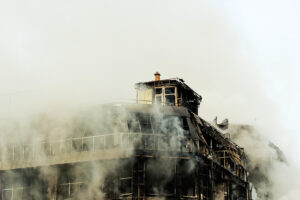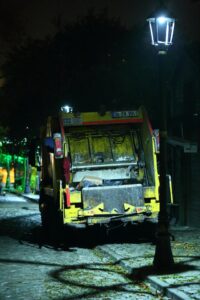Indonesian worker almost buried alive in landslide incident

The press article’s deceptive headline is a result of the incident’s connection to artificial trench work! The frontline Indonesian worker was given the assignment to fix a pipe 3 meters underground without “shoring” the trench walls.
This is a basic safety slip or case of complacency regarding the results of a trench collapse. From the perspective of the investigation, DOSH should handle this as though it were a fatality since it was almost one. Thanks to the workers’ on-site colleagues’ fast actions, this scenario could have turned tragic. Once again, a contractor puts its employees in harm’s way without thinking about their personal safety.
Because both the contractor’s procurer and the contractor themselves are accountable for such reckless work practices, both parties should be held accountable. Trench shoring is subject to explicit laws and regulations that were disregarded. To summaries, the safety danger as well as the trench collapse threat were overlooked. Such incidents will contribute to the continuous need for foreign workers because they are the only people who can perform the available tasks, which are 3D – dirty, difficult, and dangerous.
The fact that present levels of activity are lower than average due to the pandemic, major overcapacity in housing, reluctance with inward private investment, and slow flows in government-funded projects should worry contractor/construction sector owners and/or senior management. A surge in accidents can be anticipated once activity levels start to recover based on the sector’s safety and health track record and the absence of any discernible improvements in sight. Before the updated OSH regulations and a potential business recovery, the contractor/construction sector has a window of opportunity to revamp their approach to occupational safety and health management.
A Master Builders Association Malaysia (MBAM) member once told me that while they had scheduled a safety training with the CEOs of construction and contracting companies, very few of them actually turned up. The low performance of the sector is a result of Business Heads’ lack of interest in the significance of workplace Safety and health. Given this apathy, the government should regularly inform CEOs of construction and contracting companies in order to instill a different way of doing things and elevate expectations beyond simple adherence to rules and regulations. For at least the first year, these briefings should be held quarterly; after that, they should be less frequent in response to “demonstrated progress.”
In Malaysia, the Contracting & Construction industry sector has the highest rates of workplace fatalities, and accident rates (based on those that have been formally recorded) continue to be stubbornly high. It’s not a cause for celebration, but the sector doesn’t appear particularly motivated to make frontline worker safety “mainstream” in their operational procedures to the extent that “ownership driven from the top” is shown. Maybe this won’t change until new construction-related laws are passed and put into effect. In Malaysia, the organizations that represent contractors and the construction industry might be more successful in “changing the attitude” of the contracting practices utilized by their members with regard to frontline worker safety and, as a result, the sector’s reputation as an employer of choice.
Because “leading with and taking ownership of personnel safety” is not embedded in their views and methods of operation, small size contractors are most susceptible to workplace safety faults (culture).
The people who hire and contract (procure) contractors are likewise accountable for incorporating safety into the job and making sure safe procedures are followed, even when the contractors themselves are directly at fault for such incorrect thinking. The Occupational Safety & Health Construction Industry Management (OSHCIM) 2017 Guidelines would be followed if Malaysia’s contracting and construction industry believed in and actively exercised self-regulation. The fact that these guidelines—which are based on the ideas of CDM—Construction Design Management—have not yet been made into “law” contributes to the widespread disregard for “professional site safety” management. In addition, the current Occupational Safety & Health (OSH) regulation lacks “punch” because of the “out of date sanctions for non-compliance” despite clearly stating what must be done to keep workers on the job site safe. The OSH 2021 (Amendment) Bill still needs to be officially gazetted after being passed by Parliament last year. If this law is strictly upheld and carried out, it will be more significant.





